
From The Commoner
An Interview with The Artist Airidescence
The Artist Airidescence is a multimedia anarchist creator whose work has picked up significant attention on social media. Their ongoing anarchist raccoon art series has been popular enough to warrant sold out print runs on Etsy. Recently, in collaboration with scholar Zoe Baker, they have produced an animated short film entitled Pastries, Freedom, Love: A Malatesta Story based on text by the Italian anarchist Luigi Fabbri. The full short can be viewed in full for free on Youtube:
The Commoner sat down with Airidescence to discuss the inspirations for their art, how Pastries, Freedom, Love came to be, and what projects are on the horizon for 2022.
Soren Hough
How did you end up making radical art? Is it your main job, or what you do for fun? That’s super broad — take it however you want.
The Artist Airidescence
In broad strokes — so appropriate. Let’s paint another picture, shall we? I guess it sort of is entwined with how I became an anarchist. My practice is now kind of inextricable from the fact that I want liberation. The way I make things is now centered around a lot of these concepts and things I think about. Not that I don’t make art about other experiences, but those experiences unfolded into that firm belief of liberation.
So I guess it starts off with baby me — a little socdem [social democrat]. When you first enter into politics, everyone, you know, shits on socdems. They’re like the toddlers who just started out. You don’t want to be a liberal because of how ineffective they are. But you don’t want to be a Marxist-Leninist tweeting some abhorrent ‘we should kill everyone’ memes. And so, you think maybe this is a good start. Right? We start there.
And actually, that’s what initially turned me off from radical politics: the authoritarian leftists’ extreme, very visceral, hateful reactions. I mean, I’m just a fine arts student trying my best. Also my own personal situation, my own traumas, inform me. Once I ran into anarchism, it was like, ‘Oh.’ All the pieces suddenly clicked. ‘Oh, this was what I was looking for. I want to like the idea of communism, but I don’t want to achieve it through authoritarian and oppressive rulers. I want to liberate in the way that I can actually see happen; history has very clearly demonstrated that this state apparatus is not the goal of liberation. Bam.’
Running in those circles, I came across anarchists on the internet, online. I started Discord collaborating, and then I got really invested in making community and making the world better. And suddenly, I wasn’t doomerpilled anymore. As a socdem where there was a deep doomer mindset and then anarchism pulled me out of that. It was like, you’re gonna have to work hard for it, but there is light at the end of the tunnel. So yeah, I guess that’s how I became an anarchist.
I’ve always been an artist. I’ve always been creating things; that has been a part of me. So it was natural that my art would follow a progression of my self development. Zoe [Baker] would quote Marx and say, ‘to your development of your powers,’ ‘class consciousness.’ If you want to get into the specifics of how I met Zoe, it’s kind of embarrassing.
Soren Hough
Sure — how did you come to work with Zoe Baker on this project?
The Artist Airidescence
How Zoe and I collided was kind of hilarious. It’s just beautifully absurd. Let’s just say I posted a query about the character Rilakkuma, a little Japanese character, a bear creature thing. And they make a giant six foot plush of him, as one does. And I asked Zoe, not thinking she would respond, how Kropotkin would measure up on a mega jumbo Rilakkuma plushie. She responded and then we started our friendship from that unintentionally ridiculous meme posting.
From there, we started talking more and more about Fabbri and what Zoe’s reading. And I started reading Fabbri, too, and then we got to that passage. And she actually said to me, ‘I love this.’ And I read it and just fell in love. When I started reading Malatesta’s theory, I was like, ‘Oh, yes, this is good stuff.’ But then seeing like the person behind the theory, ‘Here’s the human, here’s the bit where this theory connects. This makes sense.’
I was like, this is what we need more of. We don’t need to keep on screaming incessantly about streamers and their proclivities or whatever. This is what we should be looking at. Not saying everyone has to read inaccessible theory or that type of thing, but we need to make the past accessible, and class consciousness accessible. What better way than human stories, because I think that’s what it really comes down to.
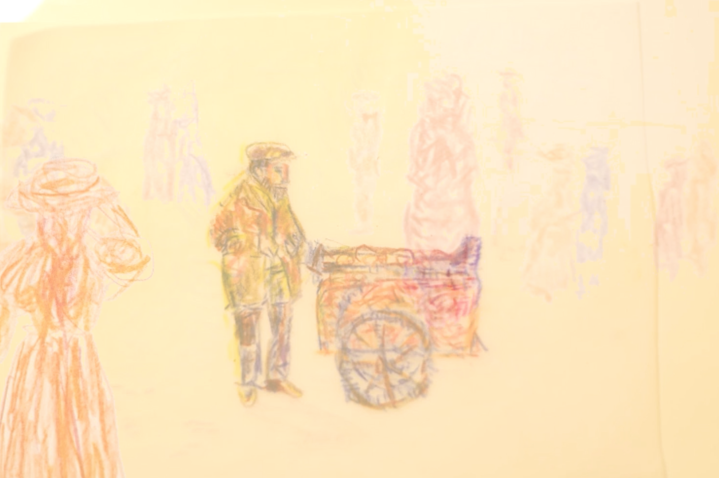
Soren Hough
Earlier you mentioned the person behind the theory. Malatesta was, on one hand, the kind of person who would give away all of his pastries (or ice cream). And on the other hand, he’s also the guy who travelled around the mountains in the 1870s with a bunch of Italian, Russian, and other assorted revolutionaries liberating towns at gunpoint. And then he would write this impressively clear theory, as well.
In my own primary research about the anarchist Marie Goldsmith, I came across a parallel anecdote — except in her version, Malatesta gave away ice cream instead of pastries. It’s almost a parable or a legend in some ways. To what degree do you think these stories are important in capturing the fullness of a character like Malatesta?
The Artist Airidescence
I have my own Malatesta story of sorts. My parents tell it from their point of view.
I had a birthday party at the infamous robotic Chuck E. Cheese’s — you know, the weird mouse, the arcade, all that jazz. My dad gave me a huge bucket of coins and told me, ‘Go have fun.’ And then other kids that did not come to my birthday party reportedly ran out of coins and asked me for mine. So I simply gave all the other children my coins and then in a matter of moments, my coins were gone. But I was happy watching the other kids play games.
I went back to my dad and was like, ‘Okay, I ran out of coins.’
He’s like, ‘You could not have used a whole bucket of coins in 10 minutes. What did you do?’
‘Well, I gave the coins to them.’
‘Who?’
‘The other kids.’
‘Why?’
‘Because they didn’t have any.’
When he told me the story back to me, he said, ‘I wanted to preserve that. But at the same time, I wanted to tell you not to do that, because I felt like you were going to get taken advantage of.’
So apparently, there are a bunch of stories like that from my childhood. Maybe we all have a little Malatesta in us. We just have to reach back and pull it out.
I have a theory, I guess I could go into this whole tangent, but I don’t know — are you keeping up?
Soren Hough
I’m happy to listen.
The Artist Airidescence
Okay. Politics is about love. I make this audacious claim. But really, truly. Why do we do what we do? Why do we organize at all? Why do we want to reconfigure society in X way? Because we fundamentally care somewhat about other humans and the human condition.
Obviously in politics, how people see humanity is reflected in how they respond with love about their politics, right? Because, you know, abhorrent fascism is this very skewed, rigid view of humanity that wants to constrain and dictate and take on an authoritarian structure because hierarchy is the way to police people, and they think it’s justified. In their way, this is ‘love’ for humanity because they think the better version of humanity requires that. So that’s a really fucked up version of love.
On the other hand, there’s the anarchist conception: that compassion, that mutualism, that recognition of the other and of sentience — and respect for it, too. So we want liberation because we think that humans, at their best, love each other, and we want to have the maximum amount of freedom and potential.
Some people scoff at it. They’re like, ‘Love and politics? What are you talking about? This is absurd.’ Is it, though? Think about it.
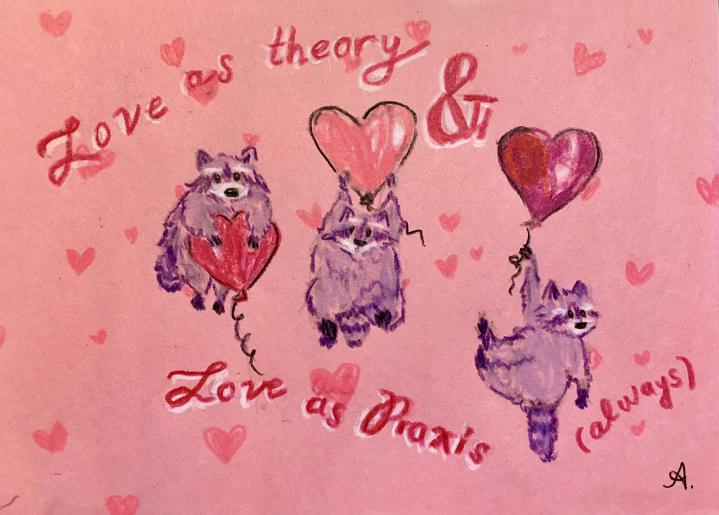
Soren Hough
It’s funny you say that, because I heard a talk about this very subject at a recent conference. Apparently, Kropotkin was quite resistant to the idea of love being a part of his theory of mutual aid. But the anarchist Zhu Xi (1900–1962), who translated and elaborated on Kropotkin for a Chinese audience, disputed this point and was big on love being a major part of anarchist thought. In other words, you’re not alone. And that’s certainly not the only example. There’s the free love movement, which was a major part of early anarchist thought, as well — particularly among women, but also among men, although not always practiced in quite the same way.
Getting back to pastries, do you think you’ll return to Malatesta to explore more of his life in future work?
The Artist Airidescence
My ambitions outrun my mouth and my sense of time, unfortunately. Hard to be ambitious under these conditions, but here we are. I just brought it up with Zoe: ‘Wouldn’t it be fabulous to work together on an animated documentary?’ I would love to do a Malatesta documentary, because I personally like watching documentaries. I am a nerd. Noam Chomsky lectures and documentaries. What else is a girl supposed to do to try to find some peace in this world, right?
Soren Hough
Have you seen Manufacturing Consent? It’s really good for something that could be very dry. Perhaps animation could do the same for a documentary on Malatesta.
The Artist Airidescence
Yeah, it is really good. I’d love to do a documentary. I would love to do a full-scale unhinged long-form film, just go hard artist mode, but ‘artist researcher mode’ is just not there yet. Zoe always says she has enough to support herself, but not enough surplus. So I guess I’m saying, ‘Give Zoe your surplus so she can start paying me.’ [Laughs.] Just kidding.
I would love to animate historical figures and historical anarchists and theories and concepts, and also contemporary stuff, too. I would just love to do that. Full time. Unfortunately, I do have to actually get back to wage slavery soon. So I guess that answers your question, ‘Is this your full job?’ I eke out this in the wee hours when I am not losing myself to mental illness or the capitalist system which grinds and breaks you.
I don’t know, I have mixed feelings about working like this because on one hand, god, I hate this. I hate being a wage slave. I hate doing this. Of course. But on the other hand, because I do a job that’s not related to my creative side, I can take all my creative powers and truly utilize them for revolution and for prefiguration and propaganda, things that I actively want. I can put my heart and soul into that versus if I was working for a business or a corporation and I was using all my beautiful creative skills for that... So it’s a mixed thing. But also not wanting to necessarily be paid… ‘Oh, I’m doing this out of my heart.’ I don’t want to get tainted by money. But at the same time, oh god, what I would give to just do this and not have to be relentlessly ground down.
Soren Hough
I often feel that tension myself. You sort of alluded just now to the role your animation, or animation in general, plays in anarchism. How does the medium fit in? You mentioned prefigurative politics — do you think things like animation, because they’re so freeform and allow total control over the mise-en-scène, are a better fit for prefiguration versus something like a photo collage or live action work?
The Artist Airidescence
I’m going to bring up Cowboy Bebop, if you know what that is, so bear with me. Netflix said let’s make Cowboy Bebop live action, and suddenly the magic was gone. What happened? Let’s take that apart.
Using a medium to its maximum is part of its magic. And there’s something very, very special — especially to me, obviously — about animation that can transcend reality. I mean, in some ways my animation has some very cinematic qualities — still frame and stuff — but there’s something I want to add, a sense of wonder and whimsical feeling to the everyday. That’s also just the magic of art in general but especially of animation. It has the ability to take the beauty of images, stringing them together and suddenly you’re moving. You’re alive. Your breath is in the work.
It’s just like what David Lynch did: He discovered painting, but then he discovered making movies, and movies are just ‘moving paintings.’ And I always liked that, because that’s kind of how I approached things, too.
There’s something about animation that matches on to this. Part of anarchism is having the audacity and daring to dream to think completely differently about the world around you. It’s very brave to try to be a visionary in a world that says, ‘Actually, vision is only good if it serves the interests of capital.’ There’s a heart to it. And I think that animation illuminates that sort of thing.
Not to mention that in terms of how media is today, people’s attention spans are shorter than ever. We need the modern day pamphlet, essentially. In order to propagate anarchy, I don’t think booklets are going to cut it anymore. I’m sorry. Don’t get me wrong, I have my zines, I have my pamphlets. I’m a fan, too. I like them. But I recognize that format is not necessarily going to be 1. as accessible, and 2. as enchanting as something that’s flashing images on the screen. So if I can contribute any flashing images to the screen and get anarchy and anarchism into people’s hearts and minds, then that’s fantastic. That’s everything. I’m a modern day pamphlet girl.
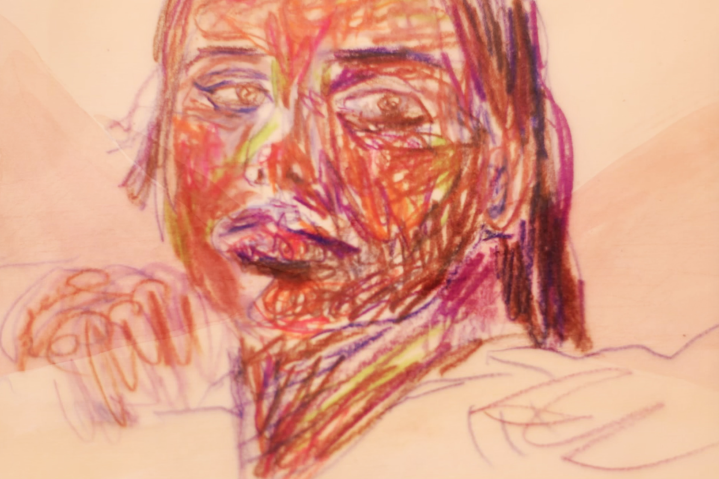
Soren Hough
It’s a medium not really explored by classical anarchism. Early animation existed while Kropotkin was still alive, for example, but most of the early propagandistic animation I’m aware of was used by people like Henry Ford to talk about how we need to kick all of the communist IWW ‘rats’ out of America.
The Artist Airidescence
They really took the moving picture and were like, ‘This works for capitalism. Do that.’
Soren Hough
And for racism, and hardcore imperialism. When you talk about stringing images together and bringing things to life, you may be interested in a take from Sergei Eisenstein, who was a Soviet filmmaker you’re probably familiar with. He wrote about how animation reveals the ‘plasmaticness’ — or inner life — of inanimate objects. For example, in the early Ub Iwerks animated shorts, everything is moving all the time. Everything’s bouncing to some sort of rhythm; chairs are moving, flames are personified. And they’re all alive because of animation, not because they have any intrinsic life to them.
In the past, you’ve cited Lynn Tomlinson as an influence. As soon as I saw her work, I immediately saw how your styles overlap. How do you achieve your aesthetic? It seems like you hand draw and then compile it?
The Artist Airidescence
I actually still have my camera just over here set up. There she is. She’s beautiful. It’s a very DIY rig.
Soren Hough
So it’s more like stop motion in that way.
The Artist Airidescence
Yes. I use hand drawn things, materials, and then I do post[-production]. And obviously, sometimes I do sound effects, sometimes I’ll grab them from free libraries. And then, somewhere in the middle of the process, I’ll usually try scoring.
Oh god, I sound so chaotic. People are like, ‘Look at her work, so professional.’ I scramble. And it works for me. No, I do plan a little bit. It’s a mix. So yeah, stop motion-esque experimental. That’s why I call myself ‘experimental’ because I have a bunch of my own processes. But I draw the way I paint, I paint the way I draw, and I don’t typically like complete cleanness in terms of lines and texture. And then that just lends itself in some way to the animation. Whereas I find that a lot of animators, because they're using a lot of digital stuff... My animations, I want them to look like drawings and paintings really come to life. I want the material to come through. That’s one thing about my process.
Actually, the funny thing was I started off just drawing. I considered myself as an artist: I draw and I paint. I don’t animate, I don’t know what that is. I wasn’t actually involved in film for the first year of learning, being in art school. But then I had this fantastic, fantastic mentor and friend. And that door was opened. And that irrevocably changed my path forever. So now we’re here, I guess.
Soren Hough
In terms of paintings, your approach kind of reminds me of Loving Vincent. I don’t know if you ever saw that.
The Artist Airidescence
Yes. I was like, ‘This is what I’d like to do.’
Soren Hough
I thought it was just amazing, and the amount of work that went into it is kind of stunning. You have some of these artistic influences that you talked about earlier. Is the primary impact they had on the aesthetic of their final product? Or do you also try and emulate the processes of these artists, as well?
The Artist Airidescence
It depends on the person, I think. Lynn I met once and it was kind of a starstruck moment because you usually don’t get to meet like the people who influence your whole process and on you becoming an artist. Obviously, I admire her process and the materials she brings to the technical and visual qualities of her work.
But the other part of [Tomlinson’s] work that I find compelling is the storytelling, the human-ness of it. Drawing back on connection and narrative, that’s really what pulls things together. Like The Elephant’s Song and The [Ballad of Holland Island] House. These heart rending things of time and loss, and even through the passage of all that loss, still finding beauty. I cry a little bit.
On that note, also Hayao Miyazaki. The storytelling, more in his themes of evolving characters and nature being very central and how capitalism is degrading nature. Some intrinsic part of us knows that ecology is an aspect of our theory and praxis that we shouldn’t disregard. That’s also, again, part of love for the ecology, love for humanity, and how they fall back into each other.
I would be ill-advised to not mention, outside of animation, David Lynch.
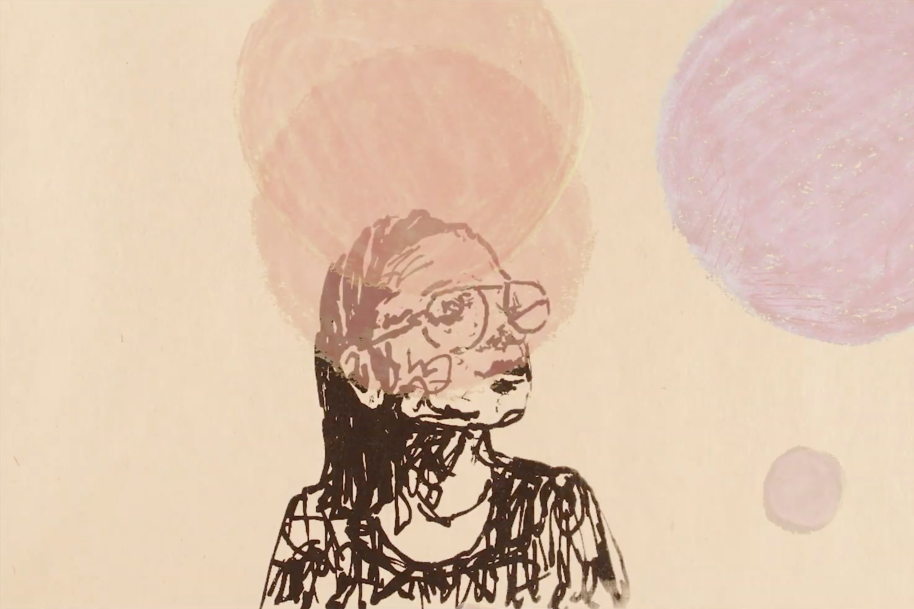
Soren Hough
You’ve discussed how you want to communicate ideas about love and prefiguration through your work. Is that your main goal in producing animation and other media?
The Artist Airidescence
My work is kind of expansive. I mentioned the anarchic propaganda aspect, but I also use it as a mode to process and work through my own trauma, what I’ve gone through, and how I’ve ended up here.
Hierarchy has really impacted my life in a very grotesque and obvious and straightforward way. China has the one child policy, or had, and now it’s a three child policy and, whew. The one child policy was this form of supposed population control by the state apparatus to supposedly make life better. But it did not extricate patriarchal norms from that society, so it was just two forces of hierarchy coalescing. And in the end, you had a lot of AFAB [Assigned Female at Birth] people and babies who were either given away, killed even, or sent to orphanages, and I was one of the ones that got sent to an orphanage. I don't remember any of this, obviously. I was literally an infant. But I was taken from China to the United States and became a citizen here.
And then one of my parents being an abuser — politics is not some abstract sort of thing that some people like to pretend it is. It completely changed the trajectory of my life. I don't know my biological parents. And the alienation. Being in a suburban, white-centric neighborhood was an incredibly alienating experience that profoundly shaped how I see things. And then also being queer on top of that — this is my life.
‘The personal is political.’ It really came down and bopped me in the head.
Soren Hough
Indeed. One of the major projects of anarchists is convincing people of just that: politics extends well beyond voting. Do you have any particular anarchist idea or figure, like Louise Michel or He-Yin Zhen, that you would want to animate but haven’t had the chance yet?
The Artist Airidescence
He-Yin Zhen? Yeah! Louise Michel? All of them. Emma Goldman. I told you, my ambitions are too much for this little form to handle. If I had the capability, the capacity, the resources — I’d love to. I’m hungry, I’m starving. There’s so much I want to know about where we were and where we came from, how these things interconnect.
I’m trying to reconnect and learn about Chinese anarchists. I’ll forever botch their names — but that’s not my fault; I was kicked out of my homeland for state and patriarchal reasons. But yeah, I’d love to reconnect with that. Maybe at some point. I’m trying to do that, maybe for my own history, my own path in life. Where did I come from?
And as always, we’re working on so many other projects. We’ve been throwing ideas back and forth. Zoe got me this book: Free Women of Spain. I started that, really having a good time. Now we’re working on a thing about how Kropotkin became an anarchist.
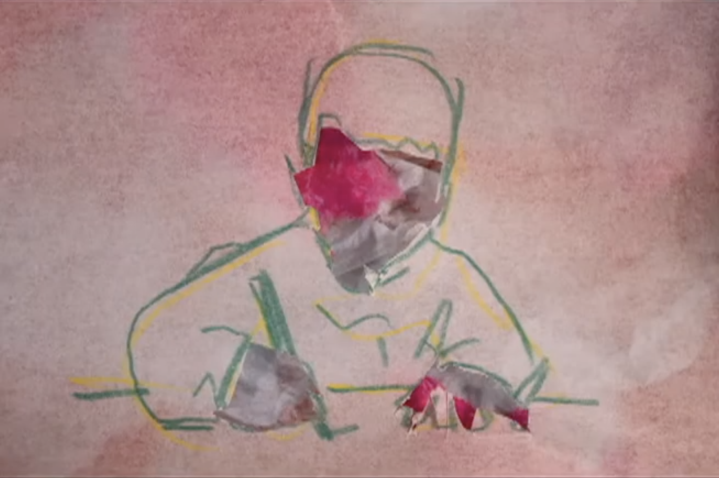
Soren Hough
Kropotkin in the Jura mountains?
The Artist Airidescence
Yeah. You got it. We’re really looking forward to it because it’s going to have a different style than the Malatesta animation. So, I get to switch it up a bit. I mean, obviously, you can still tell it’s my work; I have an intense — what one of my professors said was that I have a distinct method and style of mark making. ‘I can tell one of your pieces from far away.’
Soren Hough
That can only be a good thing. The last thing you want is for someone to say they’ve seen it before.
The Artist Airidescence
Yeah, I mean, I did get awards and stuff. So that’s the complex nature of anarchists — becoming an anarchist and then being in the fine art world. Now I have to reckon with the inherent way that the fine art world is institutionalized. It’s bad because of the hierarchy, classism, ableism, weird hierarchical things in the place where it’s supposed to be the most free. It’s like, ‘Oh, this is an art institution.’
Nope, this is like its own little prison. Foucault, Foucault, Foucault.
Soren Hough
The ‘freedom’ of academic science is the same way. You mentioned that you’ve got the Kropotkin animation coming up. And I won’t ask when that’s coming out, because I know it’s completely variable as it is with most projects.
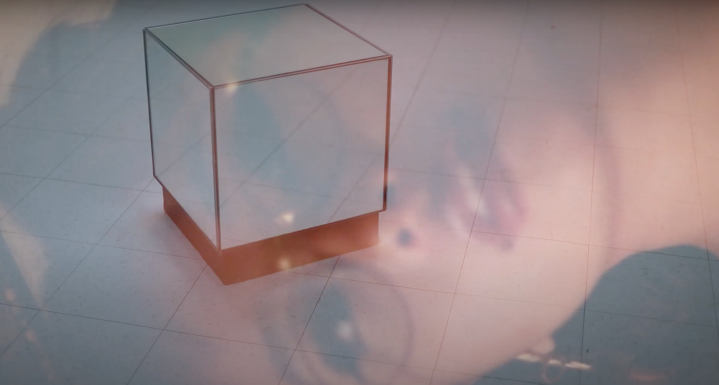
The Artist Airidescence
This year. Other than the Kropotkin, I have a little video promoting this year’s productions. There’s Love, Work Performance, How Kropotkin Became an Anarchist. And then I have an animated poem that I'm doing with Saint Andrew. And then also maybe my next poetry book, because I published one previously, but it’s before I was radicalized. (Don’t read it.)
Soren Hough
Are the raccoons just going to continue forever? Because people seem to enjoy them.
The Artist Airidescence
Oh, my god, it’s hilarious. I was like, ‘I want to make some cute anarchist propaganda. And I also just want to get the creative juices flowing. I want to see if I can make one small drawing a day. I’ll spend five to 10 minutes on this. No big deal. I’ll get a little bit of engagement or whatever. It’ll be fine. I’m not thinking too hard about this.’ Meanwhile, Twitter, social media really embraced it… I hope that people show up for when I have an exhibition, and it’s portraits of my queer friends that I spend hours and hours on: gold leaf and all the rest.
But thank you for showing up for my raccoon drawings that I spent five minutes on. Thank you.
Soren Hough
Well, in fairness, I think there’s something generalizable about a raccoon over a portrait. Why does Disney often focus on nonhuman figures in their movies? Because everyone can relate to a sad bear. It’s harder when it’s a specific person of a specific background. Perhaps that’s what it is: raccoons are just abstracted to the point where they’re more relatable.
The Artist Airidescence
That’s the other part. Raccoons are human-like, but not in very specific ways. Where they have little paws, hold things, and they’re very mischievous and very smart. When humans get into mischief they’re like, ‘No, no, don’t do that. Follow the rules.’ But when we see a slightly human-like little critter scurry around and get into mischief and get into things it’s not supposed to, we’re like, ‘Yeah, that’s great.’ Because in some ways, I think people wish they could get away with that.
The secret is: you can. Embrace the raccoon. Embrace the little critter inside of you that says, ‘I want to rebel, and create mischief.’
Soren Hough
I think that’s broadly why anarchists have adopted the raccoon as a symbol. I know you've talked about your influences, but do you have a favorite animation, short film, TV show, movie?
The Artist Airidescence
Twin Peaks, but people don't usually.... I feel like my art has two very extreme sides: pure wholesome love and hope, and then despairing, deeply traumatized art. People sometimes can’t put that together; these two simultaneously coexist inside me. I like David Lynch in that sense. He appeals to me, where it’s the façade of suburbia and the deep trenches of trauma that we all tried to hide under pretense. That’s the American consciousness. David Lynch touches on that. That's me too. I personally identify as Audrey Horne’s prodigy.
Any of Hayao Miyazaki’s movies. Protect him. Love him, cherish him. Look at his works all the time. If he dies, I’m going to cry forever.
Before you go: A General Theory of Love. Highly recommended. I’m yelling at people to read this. It’s a good book. I mean, yes, the neuroscience in terms of the triune brain model is outdated. But nonetheless, it really gets to the heart of things.
Soren Hough
Awesome, I will definitely check that out.
The Artist Airidescence
Thank you. It’s been lovely.
This interview has been edited for clarity. This article is co-published with Movie Fail.
There is 1 Comment
Stopped reading the second I
Stopped reading the second I saw those horrid puns.


